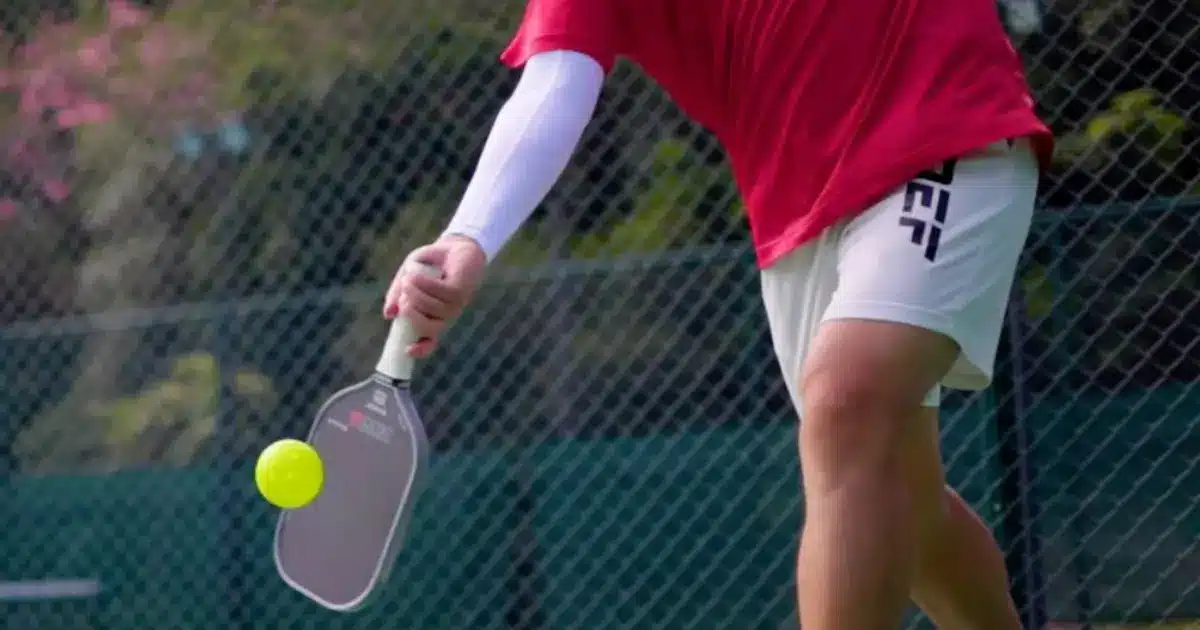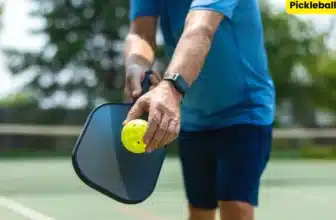
So, you have finally got your hands on a pickleball paddle and you are ready to dive into the game. But hold on a sec – before you start swinging away, let’s talk about something crucial , how to hold a pickleball paddle. Yes, that’s right. It seems simple, doesn’t it? How hard would it be to hold a pickleball paddle?
The way you grip your paddle can make all the difference in your performance on the court. But don’t worry, it’s not rocket science, and we are here to walk you through it step by step. By the end of this guide, you will be holding that paddle like a seasoned pro, ready to take on any opponent that comes your way. So, grab your paddle, get comfy, and let’s get started!
How to Properly Hold a Pickleball Paddle?
First things first, let’s talk about the three main types of grips commonly used in pickleball: Eastern, Continental, and Western. Each grip has its own unique characteristics and advantages, so it’s essential to understand them before you decide which one works best for you.
1. Paddle Eastern Grip:
The Eastern grip is perhaps the most commonly used grip in pickleball, especially among beginners.
You can achieve the Eastern grip by placing your index knuckle on the third bevel of the pickleball paddle handle. Your thumb should rest comfortably on the backside of the handle, while your other fingers wrap around the grip.
This grip offers a balanced mix of control and power, making it ideal for players who are just starting to get the hang of the game. With the Eastern grip, you will find it easier to execute both forehand and backhand shots with precision.
2. Western Grip:
Last but not least, we have the Western grip, which is less commonly used in pickleball but can be effective in certain situations, particularly for players who prefer a more aggressive playing style. To achieve the Western grip, slide your hand further towards the bottom of the handle, so that your index knuckle is positioned on the first bevel.
If you’re looking to perform some really powerful shots like smashes and drives, a grip that provides maximum leverage and power is your go-to choice. But you have to remember that with great power comes great responsibility, and you may need to sacrifice some control. The key is to practice and find the right balance for your playing style.
3. Continental Grip:
Moving on to the Continental grip, which is favored by many advanced players, especially those with a background in tennis or other racket sports. To achieve the Continental grip, simply shift your hand slightly towards the center of the paddle handle, so that your index knuckle rests on the second bevel.
If you are looking to improve your pickleball game, you really need to master the Continental grip! Not only will it allow you to switch effortlessly between forehand and backhand shots, but it also gives you greater wrist flexibility for added spin and control. Although it might feel a bit unusual at first, once you get the hang of it, you will be amazed at how much more versatile you become on the court.
Continental grip is one of the most favorite grips, according to many pickleball players. So why not discuss it a little more in detail?
Variations of Continental Grips:
There are 3 variation of the continental groups that you will probably come across in the pickleball court.
- Strong Continental Grip:
This type of continental grip is positioned towards the bottom of the handle, similar to the Western grip.
It:
- Offers maximum power and leverage.
- Is ideal for aggressive shots like smashes and drives.
- May sacrifice some control, requires practice to balance power and accuracy.
- Neutral Continental Grip:
This variation of continental grip is positioned in the middle of the handle, with the index knuckle on the second bevel.
It:
- Provides a balanced mix of power, control, and versatility.
- Is suitable for a wide range of shots, including volleys, dinks, and serves.
- Allows for smooth transitions between forehand and backhand shots.
- Weak Continental Grip:
Lastly, we have the weak continental grip. This grip is positioned closer to the Eastern grip, towards the top of the handle. Offers maximum control and precision.
It:
- Is ideal for finesse shots like drop shots and soft volleys.
- Sacrifices some power, best used in situations where control is paramount.
If you are looking to take your pickleball game to the next level, here’s a hot tip – understanding the variations within the Continental grip can do wonders for your game! By choosing the right grip for different shots and playing style, you can bring out your true potential on the pickleball court.
Factors to Consider:
Now that we have covered the basics of the three main grips, let’s talk about how to hold a pickleball paddle, regardless of which grip you choose.
1. Comfort is Key:
First and foremost, it is really important to find a grip that feels comfortable and natural to you. To find your grip, experiment with different grip styles and positions until you find one that is perfect for you. How to tell if that grip is the perfect one for you? Well, the grip that allows you to maintain a relaxed yet firm hold on the paddle is the one for you. Remember, you want to be able to maintain control over your shots without straining your hand or wrist.
2. Maintain a Loose Grip:
While you may be thinking that holding the paddle tightly will let you execute some really powerful shots, let us tell you that’s not always the case, especially during intense rallies, where it is important to maintain a relaxed grip.
If you hold the paddle too tightly, it can lead to tension in your hand and arm, which can negatively impact your performance and increase the risk of injury. Instead, focus on holding the paddle with a firm yet relaxed grip, allowing for smooth and fluid movement.
3. Positioning of the Paddle:
Pay attention to the positioning of the paddle in your hand. The face of the paddle should be perpendicular to the ground, with the hitting surface facing towards the net. This will ensure that you make clean contact with the ball and generate maximum power and accuracy in your shots.
4. Adjust Your Grip as Needed:
Don’t be afraid to adjust your grip during play, especially when switching between forehand and backhand shots. For example, you may find that using a slightly different grip for your backhand helps you achieve better control and accuracy. Experiment with different grip adjustments to find what works best for you in various situations.
5. Practice, Practice, Practice:
As with any aspect of pickleball, mastering your grip requires practice and patience. Take the time to practice different grips and grip adjustments during pickleball drills and matches, and pay attention to how they affect your performance. The more you practice, the more comfortable and confident you’ll become in your grip, allowing you to focus on other aspects of your game.
6. Holding a Paddle at Net:
Wondering how to hold a pickleball paddle when at net? When at the net in pickleball, it is important to maintain a firm yet relaxed grip on your paddle. Keep your paddle face slightly angled upward to intercept volleys and blocks effectively. Additionally, stay light on your feet and ready to react quickly to incoming shots.
Bottom Line
Mastering the grip is a fundamental aspect of pickleball that can significantly impact your performance on the court. Whether you prefer the Eastern, Continental, or Western grip, the key is to find a grip that feels comfortable and allows you to maintain control and power in your shots. Experiment with different grips and grip adjustments, and don’t be afraid to seek advice from more experienced players or coaches. With time and practice, you’ll find the perfect grip that suits your playing style and helps you take your game to the next level. So, grab your paddle, hit the court, and let your grip guide you to victory!






